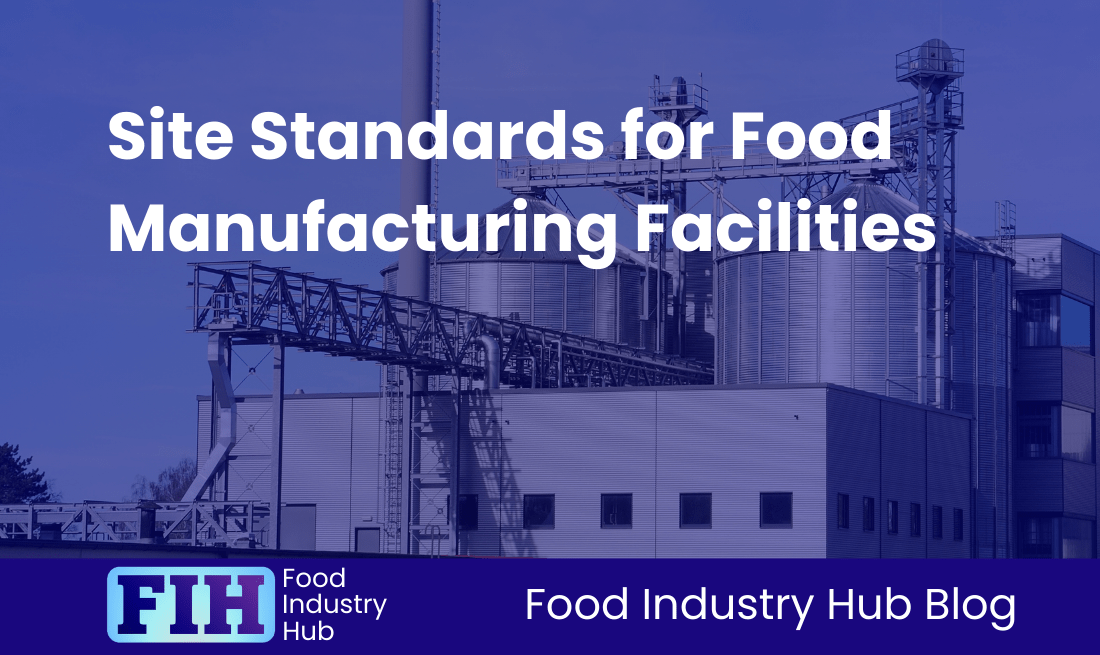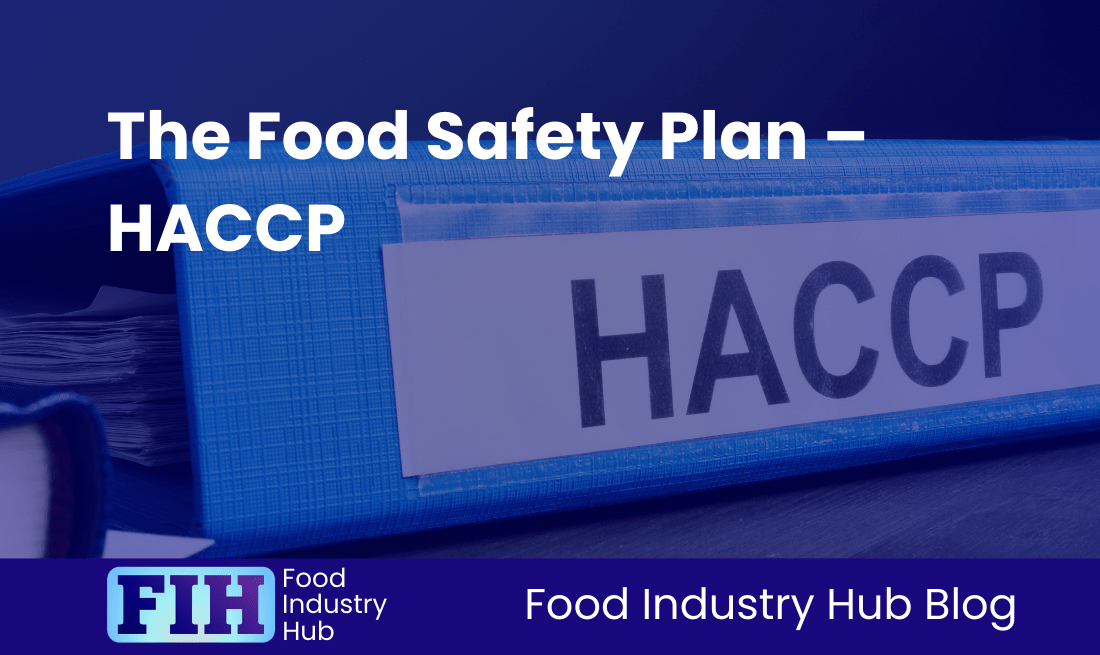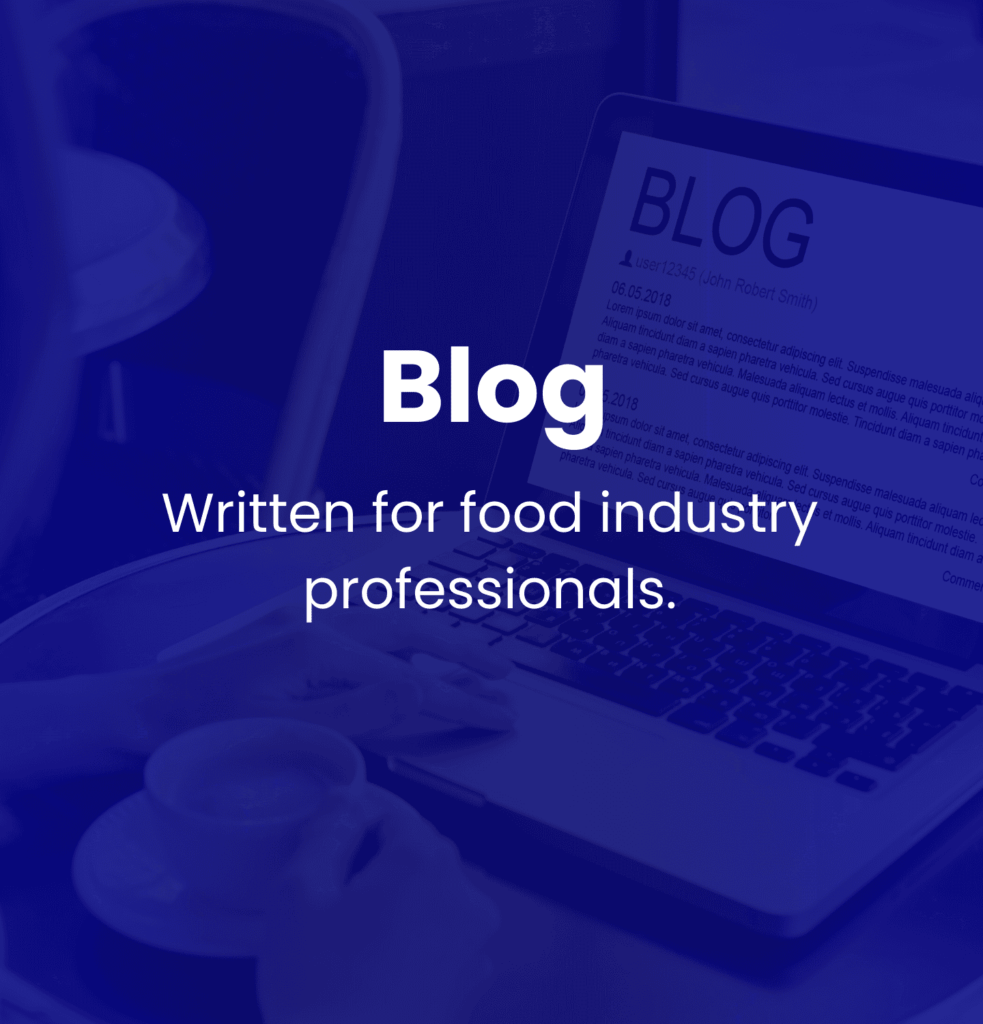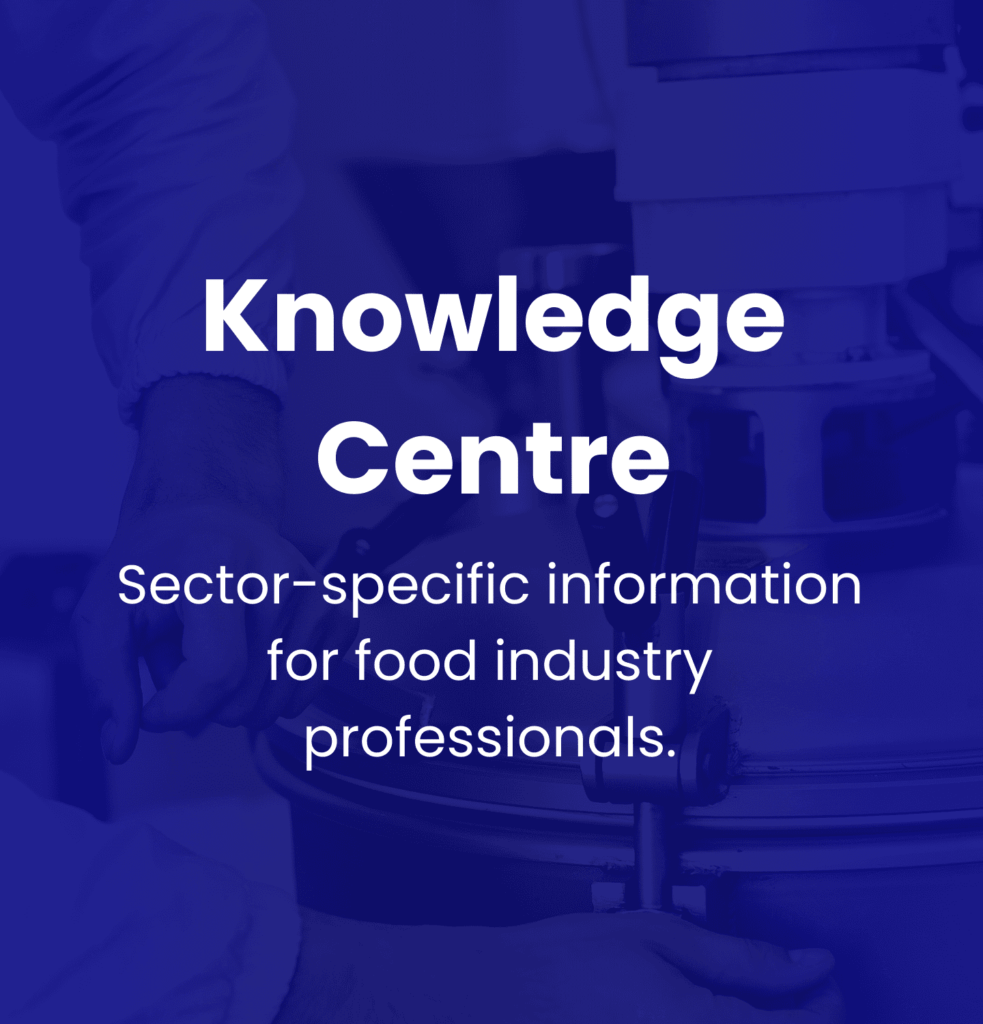Know: Microbiological Growth Inhibition Techniques
Contents
Introduction
Key Takeaways
Exploring the Basics: Definition, Scope, and Importance of Microbiological Growth Inhibition Techniques
Foundational Principles of Microbial Growth Inhibition
Physical Methods of Microbial Control
Advanced and Combined Inhibition Strategies
Chemical and Biological Inhibitors
Tackling Biofilm: Mitigation Strategies and Their Importance
Verification Measures: Introducing Monitoring and Verification Systems
The Future of Microbiological Control: Emerging Trends and Innovations
Regulatory and Safety Frameworks: A Comparative Analysis
Conclusion
Introduction
Microbiological growth inhibition forms a fundamental component in ensuring food safety and quality, significantly contributing to the extended shelf life of food items. The effective reduction of harmful microorganism proliferation allows manufacturers to maintain their products’ safety and allure, factors that are heavily prioritised in contemporary markets.
Microbiological Growth Inhibition Techniques encompass a span of methods aimed at either slowing down or preventing microbial growth within the food production process. These techniques contribute significantly to the food manufacturing sector, effectively reducing risks connected to contamination leading to food spoilage or illness. Successful application offers heightened control over product quality, decisively affecting consumer health and confidence.
Major Themes
The application of these techniques is closely allied with several prominent themes. Understanding conditions that encourage microbial growth, such as temperature, pH, and moisture levels, forms a fundamental starting point for effective inhibition. Equally, the existence of combined inhibition strategies, which employ various methods synergistically, enhance microbial control and are becoming more prevalent in recent food manufacturing practices. Finally, the regulatory environment dictates the application of these inhibition techniques, as industry participants must align with diverse international standards, safeguarding their products’ safety and integrity.
In the food industry, assimilating these principles and strategies will prove indispensable for satisfying consumer desires and legislative demands. Implementing effective microbiological growth inhibition goes beyond being merely beneficial and becomes essential to uphold excellent food safety and quality standards.
Key Takeaways
Deploying multi-target preservation strategies is key for successful microbiological growth inhibition within the food industry. By utilising a range of methods targeting various elements of microbial cells — such as membranes, DNA, and enzyme systems — this approach notably heightens food safety and extends product life. The combined effect of implementing numerous factors, in a balanced way, disrupts microbial balance more effectively than single method use, leading to improved preservation without a trade-off in nutritional value.
The Future of Microbiological Growth Inhibition
In the foreseeable future, controlling microbiological growth will shift its focus towards blending traditional techniques with pioneering preservation technologies — including food irradiation and high-pressure processing. These progression steps are set to boost shelf life and microbial stability. However, steering through potential regulatory hurdles will be pivotal. As such methods evolve, food safety regulations should adjust coevally, particularly in the UK, EU, and USA, to ensure that safety benchmarks remain intact whilst fostering innovation in preservation practices.
Global Relevance and Applicability
These multi-target strategies carry global significance, with notable application in the UK, EU, and USA. In regions such as the UK and EU, where stringent food safety regulations oversee practices, these methods can assist in complying with regulations, without compromising the product’s integrity. In the USA, the uptake of advanced preservation technologies signifies an increase in consumer acceptance and demand for progressive food safety solutions. Altogether, the usage of multi-target preservation strategies plays a significant part in elevating food safety and quality across varied markets and regulatory environments.
Food Industry Hub Management Systems can significantly boost the effectiveness of your food safety and quality management system, leading to improved confidence and elevated quality assurance throughout your operations.
Exploring the Basics: Definition, Scope, and Importance of Microbiological Growth Inhibition Techniques
Definition and Understanding
Microbiological growth inhibition techniques include a range of methods used to prevent or significantly reduce the growth of microorganisms in food products during production, distribution, and storage. Instead of completely eradicating microbial growth, these techniques aim to manage it to safe levels. They can be broadly divided into physical, chemical, and biological strategies, manipulating factors such as temperature, moisture, pH, and nutrient availability that are vital for microorganisms to prosper. For instance, refrigeration reduces metabolic activities, whereas introducing preservatives like organic acids changes the pH, resulting in an environment that is hostile to spoilage organisms.
In the context of food production, these techniques are foremost tools in managing the risk associated with microbial contamination, which can occur at all stages in the food production chain—from raw material procurement to processing and packaging. They play an essential role in defending against foodborne pathogens, thereby ensuring both safety and the quality of food products.
Scope
The scope of microbiological growth inhibition covers a wide array of food products, including dairy, meat, bakery items, beverages, and processed foods. Techniques utilised vary from refrigeration and freezing (physical methods) to adding preservatives, acidifiers, or natural antimicrobial agents (chemical methods), or deploying competitive or antagonistic microorganisms through processes such as fermentation (biological methods) [Source: NCBI]. Selection of each method is dictated by factors such as the specific nature of the product, expected storage conditions, and regulatory obligations.
Controlling microbiological growth is a fundamental aspect of food safety management interventions, such as Hazard Analysis Critical Control Points (HACCP). This system identifies vital control points needing controls to forestall contamination or spoilage.
Significance in Food Safety and Shelf Life Extension
The importance of microbiological growth inhibition techniques in food safety is immense as they play an essential role in minimising the risk of foodborne illnesses. By controlling or delaying microbial growth, these techniques decrease hazards presented by pathogenic microorganisms, including Salmonella, Listeria, and Escherichia coli, in turn preserving public health and meeting regulatory standards.
These techniques are key to extending the shelf life of food products. Microbial spoilage causes sensory deterioration—evident through changes in flavour, texture, and colour—that can lead to product refusal. By inhibiting microbial growth, manufacturers can protect the organoleptic properties and nutritional value of food, reducing wastage and enhancing efficiency across the supply chain. Extended shelf life, facilitated by microbial control also widens distribution options, minimising costs associated with fast product turnover or recalls [Source: Agriculture Institute].
Applicability and Importance in the Food Manufacturing Sector
In the food manufacturing sector, microbiological growth inhibition techniques are crucial to the operational practices. They play valuable roles in production control, utilising methods such as heat treatment (e.g., pasteurisation, sterilisation), refrigeration, dehydration, and modified atmosphere packaging to create conditions that are unfavourable to microbial growth. The inclusion of preservatives, such as organic acids and bacteriocins, is significant for chemically hindering unwanted microorganisms.
Quality assurance is equally important, necessitating the integration of microbial control strategies within HACCP frameworks to monitor and validate critical control points, ensuring microbial safety during processing. Furthermore, product development benefits from creating formulations that innately inhibit spoilage and pathogenic bacteria by adjusting the pH or water activity, or using biopreservation methods.
These techniques are especially important in creating food products that require high safety standards and long shelf lives, such as ready-to-eat meals, dairy products, cured meats, and beverages. An effective implementation of microbiological growth inhibition methods not only supports regulatory compliance but also boosts consumer confidence, which is key for maintaining a competitive edge in the market. Therefore, microbiological growth inhibition techniques stand as an essential element of modern food manufacturing, successfully balancing safety, quality, and economical considerations by preventing microbial hazards and spoilage.
Foundational Principles of Microbial Growth Inhibition
Role and Implementation of pH Control, Water Activity Reduction, and Temperature Manipulation
pH Control:
In microbial growth inhibition, controlling the pH of food products plays a significant role. Many bacteria tend to prosper in neutral to slightly alkaline pH levels, around 6.5–7.5, making them vulnerable to acidic conditions. As a consequence, food manufacturers can form environments unsuitable for the growth of harmful bacteria by reducing the pH through the integration of organic acids, such as vinegar or citric acid. This approach is widely used in creating pickled vegetables and fermented products like yogurt. Besides enhancing the flavour, lactic acid also provides protection against pathogens with the maintenance of pH levels below 4.6 [Source: FSNS].
Water Activity (aw) Reduction:
Water activity, referring to the availability of water for microbial use, holds significant importance in food preservation. Typically, microorganisms require an aw level above 0.85 for growth. Hence, the reduction of water activity can result in the significant limitation of microbial proliferation. Techniques such as drying, salting, and the addition of humectants can reduce aw, making moisture less accessible to microbes. The method thus finds extensive use in preserving dried fruits, curing meats, and baking goods, inhibiting the growth of microorganisms [Source: LibreTexts].
Temperature Manipulation:
Controlling the temperature is an elemental strategy in microbial control within the food industry. Heating techniques, such as pasteurisation and sterilisation, are widely effective in destroying or deactivating harmful microorganisms. For instance, pasteurisation involves heating food to a specific temperature (72°C for 15 seconds) to eliminate pathogenic threats while retaining the nutritional and sensory qualities. Sterilisation, on the other hand, requires more extreme conditions for absolute microbial erasure. Cooling (refrigeration) slows microbial growth by maintaining temperatures below 8°C, markedly effective against mesophilic organisms that grow rapidly in moderate temperature ranges (20°C to 45°C).
Application and Effectiveness of Hurdle Technology
Hurdle Technology is an advanced approach combining various preservation methods, making use of multiple factors to inhibit microbial growth more potently than any single method. By integrating elements such as pH control, water activity reduction, and temperature manipulation, food producers can create conditions drastically unfavourable for microbial survival. Notably, this synergistic approach proves especially effective for the production of minimally processed foods, where severe actions might potentially compromise the sensory quality. For example, fermented meats might incorporate lactic acid to reduce pH, along with lowered water activity due to curing salts and refrigeration, all synergistically preventing pathogens like Listeria and E. coli. This integrated strategy enables the food manufacturer to bolster safety and prolong shelf life without an overreliance on chemical preservatives.
Understanding and Tackling Mesophilic Organisms
Characteristics and Growth Range of Mesophilic Organisms
Mesophilic organisms are characterised by their optimal growth at moderate temperatures, normally between 20°C and 45°C. Noteworthy foodborne pathogens, including Salmonella, Escherichia coli, and Listeria monocytogenes, are categorised as mesophiles. The ability of these organisms to grow in a range overlapping room and body temperatures makes them significant contributors to foodborne illnesses, posing considerable threats in various food production environments.
Typical Control Strategies for Mesophilic Organisms
Refrigeration:
Refrigeration stands out as an effective strategy for the control of mesophilic organisms. By maintaining the temperature of food below 8°C, this method notably slows down the growth of mesophiles, preventing spoilage and extending the shelf life of perishable food items such as dairy products and meats. Even though refrigeration doesn’t kill mesophiles, it manages to inhibit their metabolic activity effectively.
Heat Treatments:
Heat treatments, including pasteurisation and sterilisation, play a significant role in managing mesophilic microorganisms. Products that undergo pasteurisation are subjected to high temperatures for short periods, in turn effectively eliminating pathogenic threats and maintaining desired sensory characteristics. Sterilisation imposes a more intense heating process, ensuring broad-spectrum microbial eradication, which is particularly useful for shelf-stable products. Implementing an amalgamation of these strategies offers a resilient defense against mesophilic organisms, thereby assuring food safety and product integrity throughout the supply chain.
Sign-up for the Food Industry Hub Mail Service
We regularly produce new content for food industry professionals, and the Food Industry Hub Mail Service is the best way to stay up to date with the latest additions.
Signup today to be added to the Food Industry Hub mailing list.
Physical Methods of Microbial Control
Physical methods form a substantial part of ensuring microbiological growth control in food manufacturing. They contribute significantly to food safety, shelf life extension, and maintaining product quality. Among the important techniques are heat treatments, refrigeration, and filtration, each designed with unique applications and effectiveness for specific food processing needs.
Heat Treatments
Heat treatments are essential in maintaining food safety with the inclusion of processes such as pasteurisation and sterilisation.
- Pasteurisation aims to heat food to temperatures below boiling, typically ranging from 63°C to 75°C for specified durations. This method eliminates pathogenic organisms whilst preserving the sensory attributes of the product. High-Temperature Short Time (HTST) pasteurisation, for example, effectively inactivates pathogens such as Mycobacterium tuberculosis and Coxiella burnetii in milk, thus significantly reducing the microbial load. Producing safe milk and juices relies heavily on this process, as it extends shelf life without significantly affecting nutritional quality.
- Sterilisation, commonly conducted through autoclaving at temperatures of 121°C under pressure, is utilised to wipe out all microbial life, including resistant spores. The absence of microbial existence in canned products is key to preventing spoilage and foodborne diseases [Source: Herald Open Access]. Regulatory bodies stress on the strict compliance with sterilisation protocols, particularly for low-acid foods (pH >4.6), to mitigate risks associated with Clostridium botulinum.
Refrigeration and Freezing
Refrigeration plays an integral part in food preservation, as it impairs microbial growth by storing products at or below 8°C. This effectively slows the reproduction of psychrotrophic organisms, such as Pseudomonas species. The method plays an important role particularly when storing perishable goods like meat and dairy products. Although freezing (at -18°C or lower) intensifies microbial growth inhibition, improper thawing can revive microbes, underlining the significance of proper thawing practice.
Filtration
Filtration acts as a mechanical barrier to separate undesirable microorganisms from liquids and gases. Using membranes with pore sizes typically ≤0.45 µm, filtration successfully removes bacteria and yeasts from beverages such as wine and beer, ensuring the products’ integrity without affecting flavour profiles. This method is particularly beneficial for heat-sensitive products where thermal processes could compromise the quality and safety.
Physical Method Applications in Food Manufacturing
Acidification in Pickling
In the process of pickling, acidification forms a key step to inhibit microbial growth. The addition of acidic components, like vinegar, lowers the pH to below 4.6, effectively inhibiting a wide range of spoilage and pathogenic microbes, including Clostridium botulinum. Pretreatment strategies like blanching help eliminate pathogens before the product is immersed in acidic brine, ensuring comprehensive safety.
Thermal Processing in Dairy Production
In the dairy industry, thermal processing, such as the pasteurisation of milk, is a standard practice employed to remove harmful bacteria whilst preserving its overall quality. For example, utilising HTST pasteurisation (72°C for 15 seconds) ensures that milk is safe for consumption, significantly reducing the risk of pathogenic contamination. Ultra-High Temperature (UHT) processing allows milk and cream products to be stored at room temperature for extended periods, enhancing convenience and shelf stability.
The integration of physical methods contributes significantly to microbiological control in food manufacturing. By tailoring these strategies, we enhance safety, quality, and shelf life across various products. The cautious application of these techniques is central to maintaining food safety standards in a multilayered and complex food supply chain.
Advanced and Combined Inhibition Strategies
The Role and Benefits of Hurdle Technology Optimisation, Modified Atmosphere Packaging (MAP), and Irradiation in Enhancing Food Safety
Hurdle Technology Optimisation
Hurdle technology combines various preservation techniques, such as thermal treatment, pH control, and humectants, creating multiple barriers against microbial growth. Its optimisation plays an essential role by creating an unfit environment for pathogens, thus extending the shelf life of food products and enhancing their safety. A significant advantage of this technique is its capability to minimise reliance on a single preservation method, subsequently lowering the risk of microbial resistance to specific treatments. For example, merging acidification and heat treatment yields synergistic effects, successfully controlling pathogens like Listeria monocytogenes and Clostridium perfringens while preserving the sensory qualities of the food. This technique also facilitates a reduction of additives usage, leading to cleaner product labels, a factor increasingly demanded by consumers.
Modified Atmosphere Packaging (MAP)
MAP alters the gases surrounding the food product radically by replacing oxygen with nitrogen and carbon dioxide, thus inhibiting aerobic microorganism growth. This method proves particularly beneficial for perishable foods, such as meats and vegetables. Research hints at MAP potentially prolonging the freshness of products by 50-200% over traditional packaging methods [Source: Aggie Horticulture]. The reduction of oxygen levels assists in minimising spoilage and in maintaining the quality and sensory characteristics of food. Nonetheless, careful consideration of gas composition and packaging standards is key to prevent spoilage and to maintain the packaging material’s barrier properties.
Irradiation
Food irradiation is a technology that makes use of controlled doses of ionizing radiation to exterminate hazardous microorganisms while preserving the quality of food. It is particularly effective in targeting pathogens like Salmonella and E. coli. Studies have revealed that irradiation can lead to a significant reduction of microbes without negatively affecting the nutritional value or sensory attributes. Irradiation can be used alongside other preservation methods to ultimately enhance food safety and prolong the shelf life of a variety of products.
Optimising D-Value and Bacteriophage Therapy for Enhanced Growth Inhibition
The Role and Application of D-Value in Reducing Microbial Population
The D-value represents the needed time at a specific temperature to reduce a microbial population by 90%. This measure is vital for the design of effective thermal treatments such as pasteurisation and sterilisation, safeguarding consumer safety while preserving the sensory qualities of food. By optimising the D-value, food producers can tailor heat treatments for specific pathogens, thereby reducing the likelihood of underprocessing and overprocessing, which could adversely affect food quality and safety.
Bacteriophage Therapy as a Contemporary Technique to Tackle Specific Pathogens
Bacteriophage therapy employs naturally occurring viruses that target bacterial pathogens, offering a fresh approach to controlling microbial contamination in food products. This method offers the advantage of selectively eliminating harmful bacteria like Listeria and Salmonella. Bacteriophages can be applied post-processing or integrated into food formulations, presenting flexibility in application. With the rise of concerns over antibiotic resistance, bacteriophage therapy provides a compelling alternative to conventional chemical preservatives, aligning with customer demands for safer and more natural food preservation methods.
Efficiently combining advanced inhibition strategies such as hurdle technology optimisation, MAP, irradiation, D-value optimisation, and bacteriophage therapy, provides food manufacturers with comprehensive tools to enhance food safety and quality while tackling microbial challenges effectively.
Chemical and Biological Inhibitors
Organic Acids as GRAS Agents for Microbial Control
Across the food manufacturing sector, organic acids such as lactic, citric, and acetic acids play an essential part in the array of microbial control techniques. Celebrated as Generally Recognised as Safe (GRAS) agents, these organic acids present an effective solution against a large spectrum of bacteria, yeasts, and molds by reducing the pH levels of food products. One can see lactic acid’s effectiveness in battling pathogens like Escherichia coli and Staphylococcus aureus as an illustrative example, while acetic acid has proven its robustness against Salmonella spp. and E. coli O157:H7, lending it an indispensable role in food preservation scopes [Source: Food Safety Magazine].
The reasons to choose organic acids go beyond their antimicrobial strength. Besides their relatively low toxicity, which allows for extensive use in assorted food products, they help reduce the regulatory complications usually connected with synthetic preservatives. Also, organic acids assist in retaining the sensory attributes of food – an important aspect in maintaining customer satisfaction – while effectively augmenting shelf life through spoilage prevention and safeguarding food safety.
Bacteriocin Applications and Essential Oils in Microbial Growth Regulation
Bacteriocins, antimicrobial peptides created by lactic acid bacteria, signify a biological control for modulating microbial populations. Nisin, a renowned bacteriocin, efficiently inhibits Listeria monocytogenes in dairy products and is approved GRAS status, enabling it for use in numerous food applications [Source: PubMed Central]. The specific action of bacteriocins brings a major advantage, eliminating harmful pathogens and sparing beneficial microbes, thus making them ideal for clean-label formulations.
Essential oils derived from plants like thyme, oregano, and rosemary, add to bacteriocins with their potent antimicrobial traits. These oils work by impairing microbial cell membranes and metabolic activities, effectively subduing both bacteria and fungi. As customer demand for more natural alternatives to synthetic preservatives increases, their popularity follows suit. However, their flavour profiles must be thoroughly evaluated, as they may alter the organoleptic characteristics of the final food products.
Interpreting Minimum Inhibitory Concentration (MIC) and Quorum Sensing Inhibition
Role of MIC in Determining Dosing Strategies for Preservatives
Minimum Inhibitory Concentration (MIC), by definition, is the smallest concentration of an antimicrobial agent needed to obstruct visible growth of specific microorganisms. Discerning the MIC assists food manufacturers in enhancing preservative dosages to ensure effective microbial control without excessive application, which could compromise food quality and inflate production expenditures. Learning from MIC data leads to the formulation of efficacious dosing strategies, thereby aiding in regulatory adherence and fostering improved food safety via precisely adjusted preservation methods.
Quorum Sensing Inhibition and Its Role in Biofilm Formation Prevention
Quorum sensing (QS) is a method by which bacteria communicate about their population density, governing activities including biofilm formation among others. Biofilms are a significant concern in food manufacturing due to their toughness against standard cleaning and disinfection procedures. Utilising Quorum Sensing Inhibition (QSI) interrupts this communication, avoiding biofilm construction and enhancing the efficiency of preservatives by increasing microbial susceptibility to antimicrobials [Source: PubMed Central].
QSI agents can be derived from natural compounds including certain essential oils and organic acids, offering strategic leverage for handling biofilm-related microbial contamination in food processing setups. This innovative method lessens the persistence of harmful microorganisms, thereby promoting better food safety and quality management practices within the industry.
Tackling Biofilm: Mitigation Strategies and Their Importance
In the food manufacturing industry, understanding and managing biofilms are essential steps towards ensuring food safety and quality.
Definition of Biofilm and Its Impact on Food Quality
A biofilm consists of a structured community of microorganisms that encapsulate themselves within a self-produced extracellular matrix. This feature allows them to cling to various surfaces, including equipment and food contact surfaces used within the food manufacturing environment. Biofilms pose significant hurdles for the food industry because they provide a protective environment for serious pathogens such as Listeria monocytogenes and Salmonella enterica. These pathogens are known for causing foodborne illnesses and persistent contamination in food processing environments [Source: Food Safety].
Biofilms enhance microbial resistance, making it difficult for sanitation processes and antimicrobial interventions to ply their effect on the microorganisms. They are capable of causing food spoilage that can lead to alterations in product texture and flavour, thereby affecting shelf life and consumer safety. Subsequently, the implementation of effective biofilm management strategies becomes an essential component of preserving food integrity and safety [Source: MDPI].
Specific Strategies to Prevent Biofilm Development
Here are two effective strategies to mitigate biofilm formation:
Quorum-Sensing Inhibitors (QSI):
Quorum-sensing inhibitors disrupt bacterial communication processes, which are integral for behaviours such as biofilm formation. These inhibitors prevent the initial growth of biofilms and destabilise existing ones without necessarily having to kill the bacteria. The disruption also lowers the risk of developing antimicrobial resistance. QSIs, which include plant-derived compounds and synthetic analogs, have been identified as effective tools for application within food systems.
Enzymatic Disruptors:
These methods make use of specific enzymes that can degrade components of the biofilm matrix. For instance, proteolytic enzymes have the ability to dismantle protein structures within biofilms, while polysaccharide-degrading enzymes, such as DNase, can target extracellular DNA that contributes significantly to biofilm stability. When incorporated into cleaning-in-place (CIP) systems, enzymatic disruptors strengthen the sanitation processes throughout food processing facilities, ensuring a thorough removal of biofilm structures.
Understanding the Concept of Zone of Inhibition and Microbiological Criteria
Significance and Measurement of the Zone of Inhibition in Agar Assays
The zone of inhibition is a key metric in microbiology, useful for assessing the effectiveness of antimicrobial agents. In agar diffusion assays, a disk imbued with an antimicrobial substance is placed on an agar plate that has been inoculated with a microorganism. If the agent successfully inhibits growth, a clear area, known as the zone of inhibition, forms around the disk. The size of this zone directly corresponds to the efficacy of the antimicrobial agent [Source: Food Safety].
This measurement plays a crucial role in food safety applications as it provides insight into the capability of potential sanitizers and preservatives to limit the growth of harmful pathogens. This information is key for maintaining the microbiological safety of food products.
Relevance to Microbiological Criteria for Food Safety
Data obtained from the zone of inhibition tests are essential for defining microbiological criteria related to food safety. By assessing the effectiveness of various antimicrobial agents against common foodborne pathogens, manufacturers can establish and put into practice stringent standards regarding microbial loads in their food products. This information is instrumental for selecting appropriate sanitation methods throughout the production process and for ensuring compliance with regulations set by food safety authorities. Additionally, the insights derived from these data can lead to the development of innovative sanitisers and packaging solutions designed to prevent biofilm formation, thereby improving food safety and reducing contamination risks.
Verification Measures: Introducing Monitoring and Verification Systems
In food manufacturing, the significance of monitoring and verification systems is undeniable. Their application in verifying microbiological control measures helps maintain food safety standards by preventing pathogen growth. As a protective measure against contamination, these systems provide continuous validation that food safety processes align with the set regulatory standards.
Importance and Applications of Key Verification Methods in Food Safety
Pathogen Detection via PCR (Polymerase Chain Reaction)
Polymerase Chain Reaction (PCR) is a molecular technique used for rapid detection of foodborne pathogens such as Salmonella, Listeria monocytogenes, and E. coli O157:H7. PCR detects specific DNA sequences, making the identification of pathogens in complex food matrices possible, even at low concentrations. Quick detection is essential for ensuring potentially contaminated products are swiftly removed from the supply chain, thereby mitigating public health risks. This timeliness of corrective actions is enhanced as PCR results are available within hours, in contrast to traditional culture methods which may take days.
Recent developments in PCR technology, like the incorporation of viability dyes such as ethidium monoazide (EMA) and propidium monoazide (PMA), can differentiate between live and dead cells. This tool greatly enhances risk assessments as it focuses on pathogens that could cause illness if not managed.
ATP Bioluminescence Testing
ATP Bioluminescence Testing is a swift method used to evaluate microbial contamination based on the presence of adenosine triphosphate (ATP), which exists in all living cells. This technique utilises a luciferase enzyme that emits light proportional to the quantity of ATP detected, indicating the microbial load on food contact surfaces. Thus, ATP testing plays an integral role in assessing sanitation effectiveness and hygiene levels in food processing environments. Immediate feedback from this test allows facility managers to implement corrective actions quickly, thereby reducing the risk of cross-contamination and foodborne illnesses.
The practicality and speed of ATP testing make it an invaluable tool to ensure adherence to hygiene standards in the demanding food manufacturing industry. ATP tests also allow operators to validate the effectiveness of cleaning protocols in real time.
Challenge Testing Validation
In food safety protocols, Challenge Testing is a method where food products are purposely inoculated with specific microorganisms under controlled conditions. It validates the effectiveness of various microbial inhibition strategies, including heat treatment, preservatives, and packaging methods aimed at extending product shelf life. By replicating realistic conditions, challenge tests provide empirical evidence of the sufficiency of control measures to uphold food product safety throughout their intended shelf life.
Such validation not only provides scientific backing to safety claims but also aids manufacturers to comply with health regulations. The solid documentation derived from challenge tests is significant for demonstrating safety to regulators and stakeholders, which in turn bolsters consumer confidence in the products.
Role of Verification Systems in Ensuring Food Safety and Regulatory Compliance
The integration of these verification systems—PCR for pathogen detection, ATP bioluminescence for sanitation validation, and challenge testing for efficacy confirmation—forms a complete framework for microbiological food safety assurance. These systems generate objective data that confirms the effectiveness of microbiological growth inhibition techniques.
By implementing these monitoring and verification methods, food manufacturers can achieve several key objectives:
- Identify and Manage Risks: Early detection of pathogen and sanitation verification minimises contamination risks in the production process.
- Ensure Regulatory Compliance: Adherence to food safety regulations, including those from the FSA, FDA, and USDA, relies on the documented effectiveness of these verification processes.
- Encourage Continuous Improvement: The results from these systems guide corrective actions and optimisation of safety processes, which is central to maintaining a high standard of food safety and quality assurance.
In short, pathogen detection via PCR, ATP bioluminescence testing, and challenge testing validation are key verification measures in the food manufacturing industry’s microbiological growth inhibition strategies. By utilising these scientifically robust and pragmatic tools, food manufacturers can enhance food safety, ensure regulatory compliance, and safeguard public health throughout their operations.
The Future of Microbiological Control: Emerging Trends and Innovations
Emerging Trends in Microbiological Growth Inhibition Techniques
Innovation is reshaping the microbiological growth inhibition field within the food industry. Notably, Clean-Label Antimicrobials continue to draw attention given the consumer inclination towards natural ingredients. These are seen as safe alternatives to synthetic preservatives. Naturally sourced antimicrobials, such as plant extracts, essential oils and fermentation metabolites, not only enhance food safety, they also satisfy the increasing demand for transparency and a reduced number of synthetic additives on product labels. Research-based evidence supports the efficacy of such natural preservatives in inhibiting pathogens such as Listeria monocytogenes and Salmonella, thus boosting food safety without undermining consumer trust.
Phage-Based Biopreservation is another emerging trend. Leveraging bacteriophages, viruses that specifically infect and eliminate bacteria, it provides a targeted path to manage pathogenic bacteria while preserving beneficial microorganisms. This technique significantly cuts reliance on traditional chemical preservatives, proving especially beneficial in ready-to-eat food products. Recent research suggests that phage applications can be successfully employed to safeguard food safety while simultaneously preserving food product integrity.
Moving towards a strategic approach, Predictive Modelling enhances food safety by incorporating advanced mathematical models to anticipate microbial growth and behaviour under various environmental conditions. This enables optimisation of food processing and preservation methodologies. By simulating different scenarios, predictive modelling helps ascertain control points in food production, where interventions can be suitably applied to minimise microbial risks. This results in saving both time and resources in testing [Source: NCBI].
The Role and Potential of Innovative Technologies
Innovative technologies play a pivotal role in strengthening microbiological control within the food industry. One such area of advancement is rapid detection technologies, which include complex molecular methods like Polymerase Chain Reaction (PCR) and metagenomics. These technologies significantly speed up and improve the precision of microbial testing. This rapid and accurate detection empowers food manufacturers to swiftly respond to contamination threats and enhance safety protocols [Source: Food Safety Magazine]. The combination of genomics with predictive modelling enables a thorough comprehension of microbial ecosystems. This knowledge empowers manufacturers to devise more effective, targeted control measures that respond to specific microbial challenges.
Bridging the Gap: Omics Technologies and Bioactive Packaging
The Role of Omics Technologies in Identifying Spoilage Microbiota
Omics technologies, including genomics and metagenomics, serve an essential function in identifying spoilage microbiota in food systems. By providing comprehensive insights into microbial communities, these technologies enable detection of spoilage organisms and pathogens at a molecular level. For example, metagenomic sequencing can uncover elusive microbial populations resistant to cultivation. This, in turn, enables manufacturers to devise targeted spoilage prevention strategies and extend shelf-life.
The Potential of Bioactive Packaging
Bioactive packaging heralds a revolutionary development in the field of food shelf-life extension. This technique embeds antimicrobial agents into the packing materials which then can be released to inhibit microbial growth on or close to food surfaces. Correspondingly, this method elevates food safety while abiding by consumer preference for fewer chemical additives and cleaner labels. Research supports the claim that bioactive packaging can extend shelf life by 30-50%, particularly in categories such as seafood and traditional baked goods which are susceptible to spoilage. As a result, bioactive packaging makes a significant contribution to food quality and safety, and addresses sustainability concerns.
The synergistic application of emerging trends and innovative technologies not only promotes superior microbiological control but also capacitates food manufacturers to meet the evolving desires of consumers for safer, longer-lasting, and eco-friendly food products.
Regulatory and Safety Frameworks: A Comparative Analysis
Microbial Growth Inhibition Techniques in the EU and USA
In the European Union (EU), the sector of microbial growth inhibition techniques adheres to regulations laid down by the General Food Law (Regulation 178/2002). This regulation establishes that every food product should be fit for consumption and delegates the onus of safety onto food business operatives. The body crucial in assessing novel microbial agents is the European Food Safety Authority (EFSA) which subjects these agents to a thorough risk evaluation before approval, as directed by the Novel Food Regulation (EU) 2015/2283. Notably, the EU lacks an equivalent to the United States’ GRAS (Generally Recognized as Safe) system, therefore the assessment and examination of new microbial growth inhibitors are more explicit, with microbiological criteria setting limits on pathogens, such as Listeria monocytogenes, in food products [Source: European Commission].
In contrast, the United States employs a more relaxed regulatory policy through the Food and Drug Administration (FDA). Here, products with a GRAS rating don’t have to go through extensive pre-market approvals, making it convenient for novel microbial inhibitors to enter the market sooner. Nonetheless, antimicrobial products categorised as pesticides have to comply with the Federal Insecticide, Fungicide, and Rodenticide Act (FIFRA) which necessitates comprehensive registration and verification of effectiveness before market introduction. This dual approach within regulatory framework makes the U.S. put more emphasis on post-market monitoring and less on pre-market assessments compared to the EU.
Implications of UK’s Regulatory Adaptations Post-Brexit
Following Brexit, the United Kingdom (UK) is reassessing and reformulating its regulatory system concerning microbial safety and growth inhibition. While initially aligned with many EU regulations, including the Food Safety Act 1990, the UK is moving towards establishing an independent set of standards. This could possibly lead to distinct approval processes for novel food items and microbial agents, thereby necessitating that food manufacturers understand and apply both UK and EU laws.
For UK manufacturers working with microbial growth inhibitors aimed for the U.S. market, abiding by EPA’s FIFRA is essential. This involves registering microbial products used as pesticides in the U.S., and proves their safety and effectiveness before they are allowed into the market [Source: PMC]. This dual compliance could potentially escalate operational costs and bring complexity to marketing strategies amid these varying regulatory scenarios.
Navigating Through HACCP and BRCGS Global Standard
HACCP’s Preventive Approach in Food Manufacturing
The Hazard Analysis and Critical Control Points (HACCP) system is a key framework in food manufacturing, aimed at preempting food safety concerns. HACCP identifies potential allergenic, biological, chemical, and physical risks and establishes critical control points (CCPs) to supervise and manage these dangers in the food production process. By implementing precautionary measures (like temperature monitoring and pH control), food producers can considerably lower the threat of microbial contamination before products reach the end consumer.
Significance of BRCGS Global Standard in Ensuring Food Safety
The BRCGS Global Standard for Food Safety is an internationally recognised certification that stresses compliance with HACCP principles along with stringent operational and quality management requirements. Attaining BRCGS certification implies to customers and regulatory agencies that a manufacturer follows high safety standards, managing microbial contamination risks efficiently. This standard is gaining prominence in global trade, with most food retailers and service providers often making compliance a precondition. Regular audits and adherence to the BRCGS Standard foster constant betterment in food safety management practices, thereby offering further protection to public health.
This comparative analysis brings attention to the different regulatory frameworks in the EU, USA, and UK, emphasising the complexities food manufacturers encounter in adhering to safety standards and managing microbial growth inhibition techniques efficiently.
Conclusion
In this discussion of Microbiological Growth Inhibition Techniques in Food Manufacturing, we’ve covered several important themes. Let’s recap the main points.
Foundational Principles of Microbial Growth Inhibition
Controlling microbiological growth plays a significant role in preserving both the safety and the quality of food produced within the manufacturing industry. The strategies designed for this purpose revolve around modulating conditions necessary for microbial survival, such as manipulating pH level, temperature and moisture content. For instance, a proven technique of food preservation involves the use of acidification with organic acids like citric and acetic acid, which are effective in adjusting pH levels and hampering microbial metabolic activities.
Temperature management, for instance, by employing pasteurisation, destroys harmful organisms such as Salmonella and E. coli, thus extending the shelf-life of food products. Implementing rigorous hygiene protocols, focusing on scrupulous sanitisation of processing equipment is also critical to mitigate biofilm formation, a major threat to food safety and quality.
Advanced and Combined Inhibition Strategies
As industry practices evolve, so do the strategies for microbial growth inhibition. These modern methods integrate traditional physical practices with new techniques to strengthen microbial control. One such technique involves the use of quorum sensing inhibitors that interrupt bacterial communication pathways, thereby impairing biofilm formation, and reducing the possibility of microbial resistance.
In addition, multi-hurdle technology utilises a mix of different stress factors, such as integrating heat treatment with UV radiation, therefore creating unfavourable conditions for microbial growth.
Regulatory and Safety Frameworks
Understanding and complying with the regulations regarding microbial growth inhibition is essential for food manufacturers. Compliance with regulatory bodies such as the FSA, FDA, and EFSA requires implementing validated control measures at crucial points during production. This encompasses meticulous documentations and validations of microbial log reductions achieved through processes, for example, pasteurisation.
It’s important to note that emerging guidelines accentuate enhanced practices to prevent biofilm formation, mirroring the evolving understanding of microbial contamination in food processing environments.
Key Takeaways and Future Directions
The role of microbiological growth inhibition in food manufacturing is becoming increasingly significant, leading to a few essential takeaways for the industry. Firstly, foundational principles retain their importance, with current research aiming to refine traditional methods for optimal food spoilage prevention. Secondly, the food industry faces an urgent need for implementing sustainable solutions, such as the inclusion of plant-derived antimicrobials and bioactive packaging methods to align with eco-friendly initiatives.
Lastly, as modern innovations such as artificial intelligence for real-time microbial detection gain popularity, the need for standardising global regulatory standards becomes apparent. This would help address the varied food safety challenges posed by a globally interconnected supply chain. Ensuring a comprehensive approach to microbial growth inhibition in future will enhance the safety and quality of food products.
About The Food Industry Hub Knowledge Centre
The Food Industry Hub knowledge centre delivers informative content on a variety of topics pertinent to the food manufacturing industry.
You can return to all topics by clicking here.
From The Food Industry Hub Signposting Service
Additional resources from The Food Industry Hub Signposting Service.
From The Food Industry Hub Blog
Expanding on this topic with related content from our blog.











